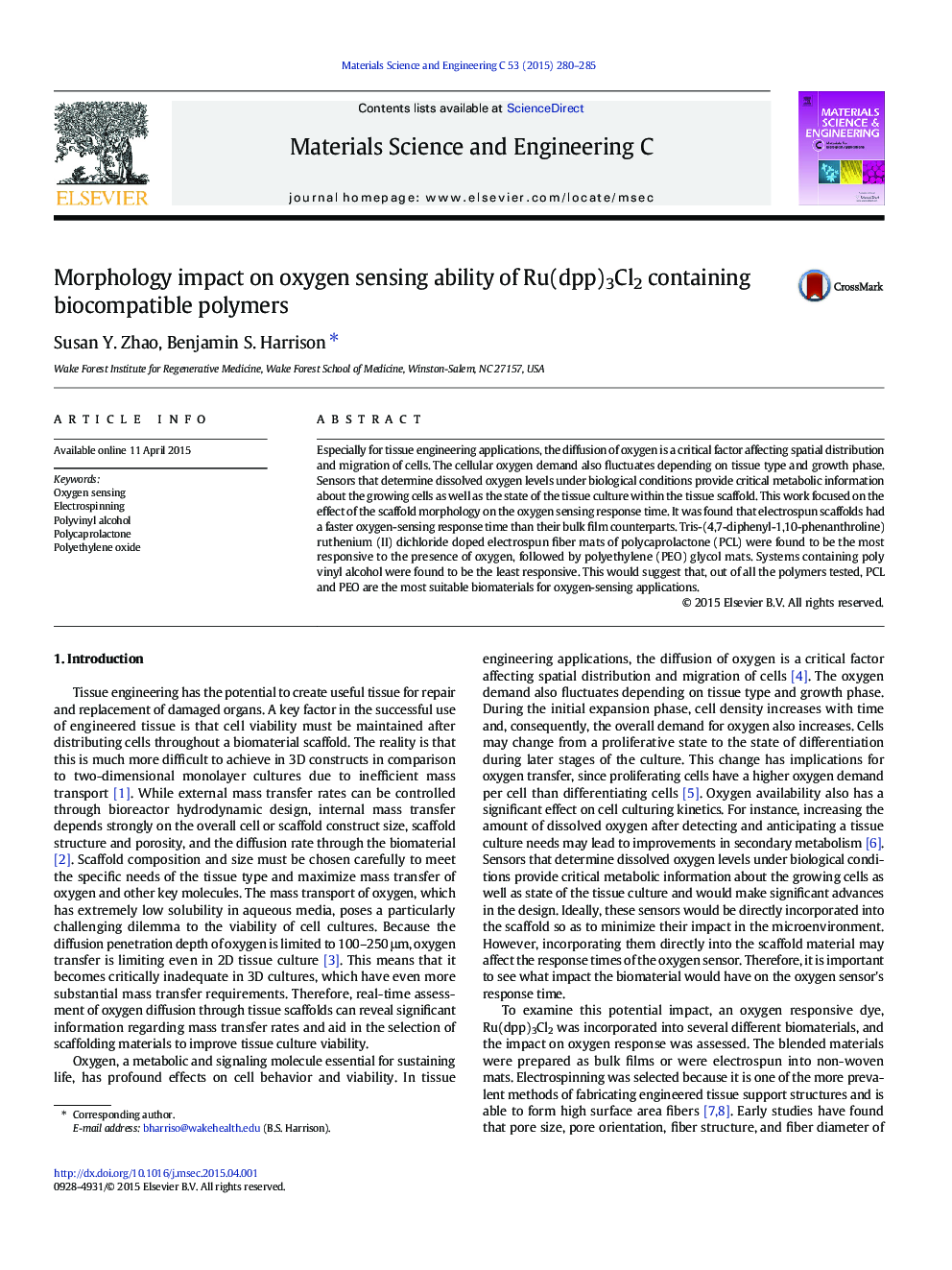| کد مقاله | کد نشریه | سال انتشار | مقاله انگلیسی | نسخه تمام متن |
|---|---|---|---|---|
| 1428104 | 1509168 | 2015 | 6 صفحه PDF | دانلود رایگان |

• Ru(DPP)3Cl2 was blended into common biocompatible polymers such as PEO, PCL, and PVA.
• Oxygen sensing was more responsive when polymers were electrospun compared to bulk.
• Electrospun PEO and PCL with Ru(dpp)3Cl2 showed similar oxygen sensing responses.
• PVA showed a slight improvement in oxygen sensing rate when electrospun.
Especially for tissue engineering applications, the diffusion of oxygen is a critical factor affecting spatial distribution and migration of cells. The cellular oxygen demand also fluctuates depending on tissue type and growth phase. Sensors that determine dissolved oxygen levels under biological conditions provide critical metabolic information about the growing cells as well as the state of the tissue culture within the tissue scaffold. This work focused on the effect of the scaffold morphology on the oxygen sensing response time. It was found that electrospun scaffolds had a faster oxygen-sensing response time than their bulk film counterparts. Tris-(4,7-diphenyl-1,10-phenanthroline) ruthenium (II) dichloride doped electrospun fiber mats of polycaprolactone (PCL) were found to be the most responsive to the presence of oxygen, followed by polyethylene (PEO) glycol mats. Systems containing poly vinyl alcohol were found to be the least responsive. This would suggest that, out of all the polymers tested, PCL and PEO are the most suitable biomaterials for oxygen-sensing applications.
Figure optionsDownload as PowerPoint slide
Journal: Materials Science and Engineering: C - Volume 53, 1 August 2015, Pages 280–285